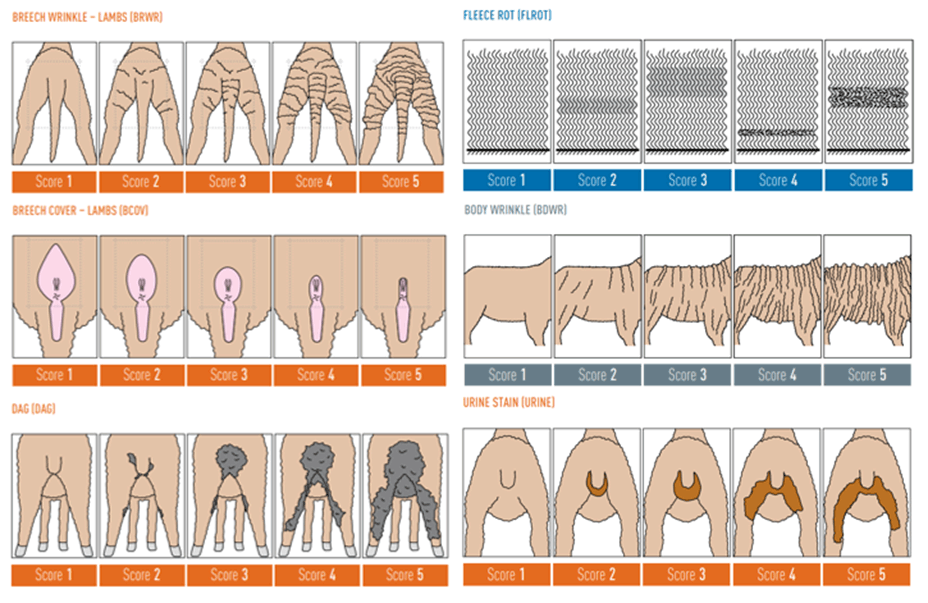Flystrike Indicator Traits
SMC are recording visual scores of the below flystrike indicator traits for a number of our clients:
Breech wrinkle
Breech cover
Body wrinkle
Dags
Urine stain
Fleece rot
ASBV’s are currently available for all flystrike indicator traits except for urine stain (more information needs to be entered into the database for there to be a reportable ASBV for this trait). The number of animals with reportable flystrike indicator trait ASBVs has been increasing year on year (figure below) with UNE MerinoLink DNA Project participants contributing 35% of records for these traits in the MerinoSelect database.
The number of animals with reportable ASBVs has been increasing year on year for early breech wrinkle (ebwr), early breech cover (ebcov), late body wrinkle (lbdwr), late dag (ldag) and late fleece rot (lfrot).
SMC have been assisting some of our ram breeder clients with collecting visual scores to apply selection pressure for these traits in their ram breeding operation and provide information to clients who are looking to transition to or maintain non-mulesed status.
We are also working with commercial breeders to score, identify genetics with lower wrinkle scores using ASBVs and using a number of tools to assist with transitioning to non-mules.
Some key points that need to be considered include your starting point, location, current calendar of operation and your desire to change.
Below is an example of the distribution of one flocks breech wrinkle (collected at marking time) and another flocks production differences between ewes that were mulesed (with pain relief) – scores 3, 4 and 5 – and non-mulesed – scores 1 and 2.



